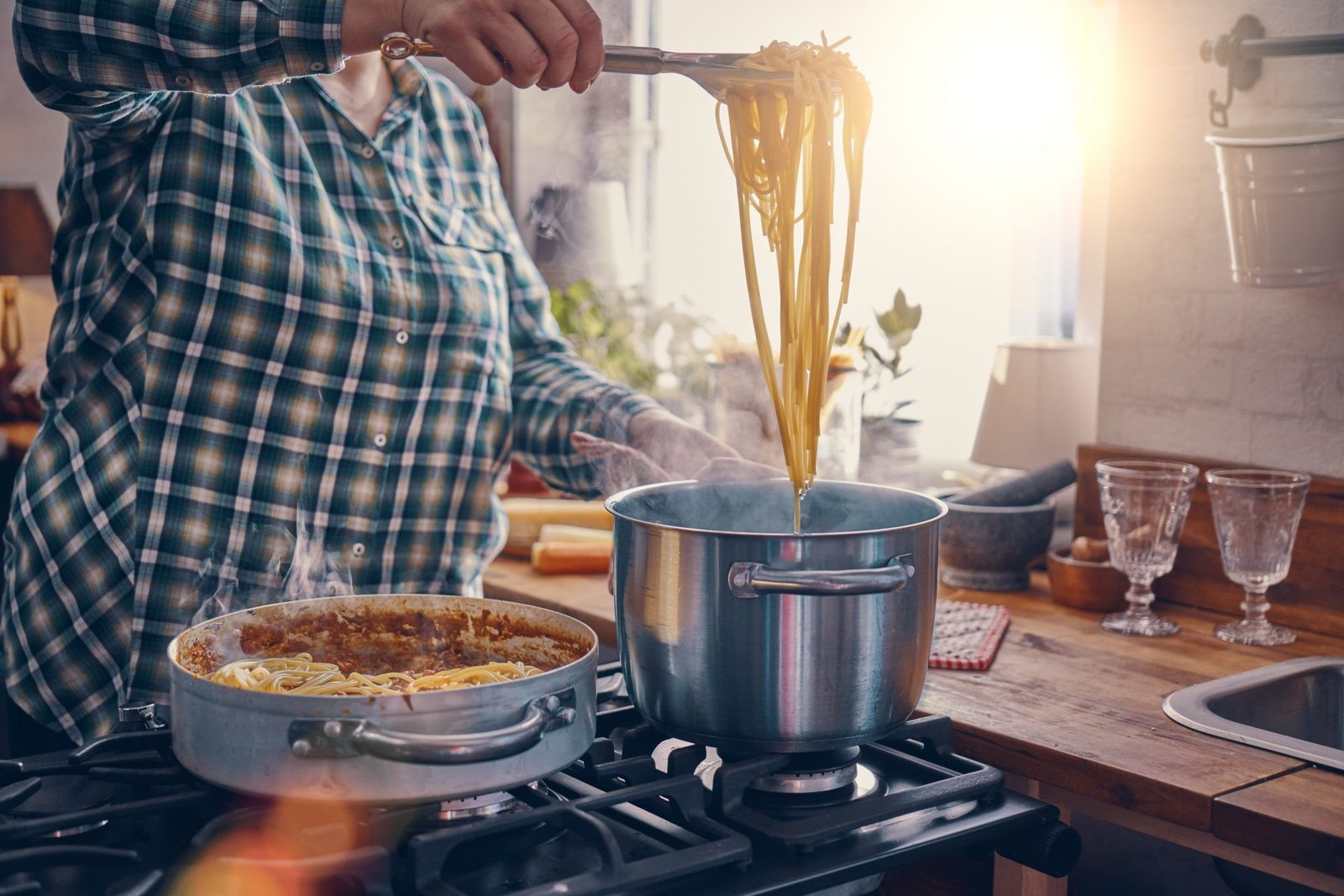
Making restaurant-quality pasta at home can seem daunting, but with the right techniques and ingredients, it’s achievable and incredibly rewarding. Fresh pasta, cooked to perfection and paired with a delicious sauce, can elevate your home dining experience to gourmet levels. This guide will walk you through the process of making your own pasta, ensuring that you impress family and friends with your culinary skills.
Choosing the Right Ingredients
To make perfect pasta, start with high-quality ingredients:
- Flour: Use 00 flour, which is finely ground and ideal for pasta. It gives pasta a silky texture. If 00 flour is unavailable, all-purpose flour can work, though it may yield a slightly different texture.
- Eggs: Fresh, organic eggs are the best choice. The richness of the yolks will enhance the flavor and color of your pasta.
- Salt: A good quality sea salt is essential for enhancing the flavor of your pasta dough.
- Water: Use filtered water for mixing if needed. It’s often not required, but it can help in adjusting the dough’s consistency.
Making the Dough
The Traditional Method
- Measure Ingredients: For every 100 grams of flour, use one large egg. You can adjust quantities based on how much pasta you want to make.
- Create a Flour Volcano: On a clean surface, mound the flour and create a well in the center. This is where you’ll add the eggs and salt.
- Add Eggs and Salt: Crack the eggs into the well and sprinkle salt over them.
- Incorporate Flour: Using a fork, beat the eggs gently, gradually incorporating flour from the edges of the well. Continue until the mixture is too stiff to mix with a fork.
- Knead the Dough: Use your hands to bring the dough together. Knead for about 10 minutes until it’s smooth and elastic. If the dough feels too sticky, add a little more flour.
The Food Processor Method
If you prefer a quicker method, use a food processor:
- Combine Ingredients: Add flour and salt to the processor. Pulse to combine. Then, add the eggs and pulse until the mixture resembles coarse crumbs.
- Form the Dough: Transfer the mixture to a floured surface and knead it by hand until smooth, about 5 minutes.
Resting the Dough
After kneading, wrap the dough in plastic wrap or cover it with a damp cloth. Let it rest for at least 30 minutes at room temperature. This resting period allows the gluten to relax, making it easier to roll out.
Rolling Out the Pasta
- Divide the Dough: Cut the dough into quarters. Keep the pieces you’re not currently using covered to prevent them from drying out.
- Flatten the Dough: Using a rolling pin or a pasta machine, flatten one piece of dough. If using a pasta machine, start with the widest setting and gradually decrease the thickness.
- Dust with Flour: As you roll out the dough, dust it lightly with flour to prevent sticking. Aim for a thin sheet, about 1/16 inch thick.
Cutting the Pasta
Once you have rolled out the dough, it’s time to cut it into your desired shapes:
- Fettuccine or Tagliatelle: Roll the sheet of pasta loosely and slice it into strips. Unroll them to create ribbons.
- Lasagna Sheets: Cut the rolled dough into large rectangles.
- Ravioli: Use a second sheet of dough to sandwich a filling of your choice (cheese, meat, or vegetables). Cut and seal using a fork.
Cooking the Pasta
- Bring Water to a Boil: Fill a large pot with water and add a generous amount of salt. The water should taste like the sea.
- Cook the Pasta: Fresh pasta cooks much faster than dried pasta. Depending on the thickness, it usually takes 2-4 minutes. Taste a piece to ensure it’s al dente.
- Reserve Pasta Water: Before draining, reserve a cup of the starchy pasta water. This can be used to adjust the consistency of your sauce.
Pairing with Sauces
Restaurant-quality pasta deserves a sauce that complements its flavors. Here are a few classic pairings:
- Marinara Sauce: A simple sauce made from fresh tomatoes, garlic, and basil. Simmer together for a few minutes and toss with your pasta.
- Alfredo Sauce: A rich, creamy sauce made from butter, heavy cream, and Parmesan cheese. Heat the cream and butter together, then stir in the cheese until melted.
- Pesto: A vibrant sauce made from fresh basil, garlic, pine nuts, Parmesan, and olive oil. Blend until smooth and mix with the pasta.
- Aglio e Olio: A quick sauce made with sautéed garlic in olive oil, finished with red pepper flakes and parsley.
Finishing Touches
To elevate your dish:
- Grate Fresh Cheese: Always opt for freshly grated Parmesan or Pecorino Romano.
- Add Herbs: Fresh herbs like basil, parsley, or thyme can enhance the dish’s flavor.
- Drizzle with Quality Olive Oil: A splash of good olive oil just before serving adds richness.
Conclusion
Making restaurant-quality pasta at home is not only possible but also a gratifying culinary experience. With practice, you’ll master the art of pasta-making, impressing your family and friends with delicious, homemade dishes. So roll up your sleeves, gather your ingredients, and start creating pasta that rivals your favorite restaurant!
Subscribe to newsletter
Latest Blogs
Kylian Mbappe, the French football sensation, has officially joined Real […]
David Beckham, a name synonymous with elegance on the football […]
In the digital age, social media has transformed nearly every […]
The traditional office environment, long characterized by cubicles, face-to-face meetings, […]
The integration of artificial intelligence (AI) in healthcare is revolutionizing […]
In recent years, mental health awareness has surged, prompting a […]












